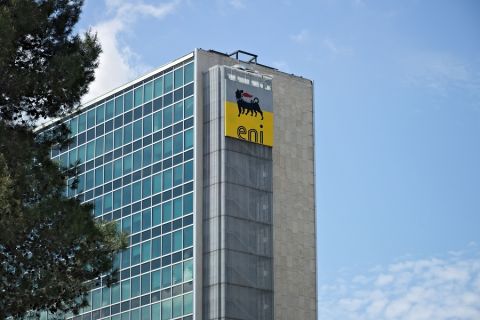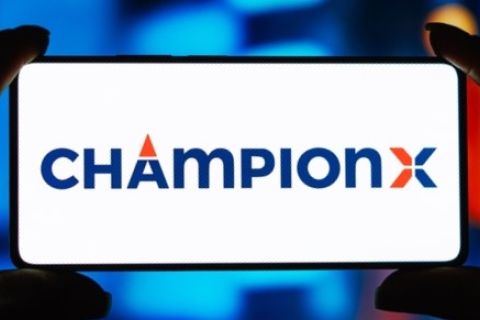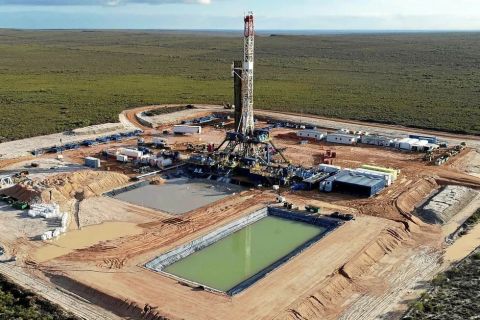[Editor's note: A version of this story appears in the December 2020 issue of Oil and Gas Investor magazine. Subscribe to the magazine here.]
We are fairly confident that the Beatles were not thinking of the current state of the oil and gas industry in their iconic cover of Barrett Strong’s “Money (That’s What I Want),” with the repeating chorus of “money, that’s what I want … that’s what I want, yeah.” But, given E&P’s continuing need to utilize “nontraditional” financing sources for capital to maintain production and otherwise develop their assets, it felt like an appropriate reference for this article, particularly in the context of transactions involving the sale of overriding royalty interests (ORRIs) and volumetric production payments (VPPs) to “financial buyers.”
Over the last 18 months, there have been several examples of E&Ps executing these types of transactions as financing sources, which has often been the case in periods during which traditional sources of financing have been unavailable to the industry.
The financial buyers of ORRIs and VPPs—typically banks, hedge funds and private equity sponsors seeking investments with E&Ps at the asset level—generally find them attractive for several reasons, including:
1) ORRIs and VPPs effectively sit at the top of an E&P’s capital structure;
2) ORRI and VPP assets are typically more liquid than many other types of investments; and
3) in most jurisdictions, ORRIs and VPPs will survive a bankruptcy if structured properly.
Definitions
An ORRI is a nonoperating, nonexpense-bearing interest that entitles its holder to receive a specified percentage of oil and gas produced from the burdened properties. An ORRI is carved out of the working interest of an oil and gas lease and, therefore, will typically last for the duration of the leasehold (or leaseholds) that it burdens.
Importantly, the vast majority of jurisdictions classify ORRIs as a real property interest (because they are interests in the underlying minerals) rather than a contractual right or personal property interest.
VPPs share many characteristics with ORRIs. VPPs are also nonoperating, nonexpense-bearing interests that are carved out of the working interest of an oil and gas lease, giving the holder thereof a right to a fixed quantity of hydrocarbons produced from the burdened properties or the proceeds therefrom. VPPs are generally held to be real property interests (again, because they are interests in the underlying minerals) in most jurisdictions.
The primary difference between a VPP and an ORRI is the duration of the resulting right reserved. Whereas an ORRI generally survives for the entire life of the lease from which it is created, a VPP is limited to a specified volume of hydrocarbons produced from the burdened properties. This is partially the basis for VPPs often being referred to as “term overriding royalty interests.” Once the specified volume of hydrocarbons has been produced and delivered to the VPP holder, all interests in the burdened leases revert to the grantor of the VPP and it is extinguished.
Other key differences between ORRIs and VPPs relate to their treatment from accounting and tax perspectives, each of which are outside the scope of this article. Transactions involving ORRIs and VPPs utilize many of the same types of transaction documents used in typical upstream oil and gas transactions—including a purchase and sale agreement and conveyance instrument—and at the closing of the ORRI/VPP transaction, the seller conveys the ORRI or VPP to the buyer in exchange for a cash payment, similar to what would be seen in an upstream transaction.
Like traditional upstream oil and gas transactions, the conveyances granting ORRIs and VPPs are recorded in the real property records of the counties in which the burdened properties are located. Because ORRIs and VPPs have been commonly used in the industry for several decades, sophisticated industry participants are familiar with these types of transactions and the associated documentation.
Advantages
ORRIs provide several advantages to the buyer:
Nonexpense bearing: A principal benefit of an ORRI is the right to future revenue from the burdened properties without the obligations associated with the corresponding share of costs (other than “post-production expenses” and income and similar taxes). In some transactions, this potential upside is greater where all or a majority of the leases burdened by the ORRI are undeveloped, as the new ORRI holder will enjoy the benefits of peak production from new wells without bearing any drilling and completion costs.
In transactions in which some or all of the assets burdened by the ORRI are already drilled and producing, the ORRI buyer will enjoy its share of the ongoing production, with less uncertainty regarding the development plans for the assets.
Real property interest: As mentioned above, ORRIs are considered to be real property interests in most jurisdictions. Accordingly, ORRI investments are attractive to buyers because they serve as a vehicle to invest with an E&P at the asset level rather than elsewhere in an E&P’s capital structure. This is key because of resulting protections in a bankruptcy situation (including not being subject to the “automatic stay” or being subject to rejection as a contractual right in a bankruptcy proceeding), as well as greater flexibility in exiting the investment through asset sales.
Nonoperating interest: Because ORRIs are nonoperated interests, an ORRI holder generally is neither required to possess any operational capabilities nor does it need to employ the large teams of professionals often required to operate and develop the burdened properties. This is appealing to buyers seeking to make investments with E&Ps at the asset level but who lack the capabilities to operate the underlying oil and gas properties.
Given their many similarities, VPPs share many of the same advantages as ORRIs.
Considerations
ORRIs and VPPs are not free of risks, contingent and immediate, for the parties involved. The following sets forth a list of certain considerations that should be taken into account when evaluating an ORRI or VPP transaction and ways to mitigate those risks: Lack of control: The ORRI holder bears the risk of nonproduction and nondevelopment of the burdened leases (including associated reserve risk), which is especially important since ORRI revenue is entirely dependent on the amount of hydrocarbons produced.
An ORRI seller may miscalculate the breakeven point of the working interest in a well or lease and cause the underlying assets (or a portion of such assets) to be uneconomic to develop due to the newly created ORRI. If, consequently, the operator/lessee does not develop such well or lease, the ORRI holder may not receive the economic return expected from its investment.
To address this concern, a buyer of an ORRI will often require the seller to maintain some minimum level of activity or otherwise remain subject to certain operational standards on the burdened properties, effectively giving the ORRI holder some minimum level of oversight over the operation and development of the burdened properties following the closing of the ORRI transaction. VPPs share a similar risk.
Bankruptcy: Although ORRIs are considered a real property interest in most jurisdictions, there are, however, a small number of jurisdictions where an ORRI is treated as a personal property interest, which creates a risk that the ORRI will not survive a bankruptcy situation. This consideration is equally, if not more, important for VPPs. While the general rule that VPPs are real property rights appears to hold in most instances, there are recent situations that call into question the ability of VPPs to survive a bankruptcy process where they are structured in a way that more closely resembles a contractual loan rather than a real property interest.
Another risk is that the ORRI or VPP transaction may be deemed a fraudulent transfer in a bankruptcy proceeding and potentially unwound by the bankruptcy court—worth noting given the financial condition of many companies contemplating ORRI or VPP transactions.
Commodity price risk: The ORRI owner bears the commodity price risk that the production will be (or can be) sold at a price that ensures an adequate rate of return for the ORRI owner. This risk is often mitigated through the ORRI owner obtaining commodity price hedges for the associated ORRI production. VPPs share this risk, which is often also mitigated through commodity price hedges.
Conclusion
Given the capital-intensive nature of most upstream assets, E&Ps will need continued sources of capital to maintain activity levels of development as well as to position themselves for renewed growth in future months and years as commodity prices recover. Maintaining (or increasing) these activity levels is important to sustaining production, which in turn generates the cash necessary to service existing debt obligations, the balances of which remain relatively significant in the upstream space.
Traditional financing sources for this capital are to remain tight and/or unavailable for E&Ps through at least the end of 2020 and are likely to remain so into 2021, requiring owners of upstream oil and gas assets to continue to explore alternative financing arrangements such as divestitures of ORRIs and VPPs.
ORRI and VPP transactions provide many benefits to both current owners of oil and gas assets and potential buyers who are seeking to make financial investments with E&Ps at the asset level. If structured thoughtfully, diligenced appropriately and managed properly, utilizing ORRIs or VPPs to secure capital from a financial buyer can be quite beneficial to an E&P, allowing them during this downturn to—in the words of another iconic song by the Beatles—“get by with a little help from my friends.”
M Justin T. Stolte is a partner in the Houston office of Latham & Watkins and serves as the firm’s Global Chair of its Energy and Infrastructure Group. Michael R. Sellner is an associate in the Houston office of Latham & Watkins and member of the firm’s Energy and Infrastructure Group.
Recommended Reading
Ithaca Energy to Buy Eni's UK Assets in $938MM North Sea Deal
2024-04-23 - Eni, one of Italy's biggest energy companies, will transfer its U.K. business in exchange for 38.5% of Ithaca's share capital, while the existing Ithaca Energy shareholders will own the remaining 61.5% of the combined group.
Ithaca Deal ‘Ticks All the Boxes,’ Eni’s CFO Says
2024-04-26 - Eni’s deal to acquire Ithaca Energy marks a “strategic move to significantly strengthen its presence” on the U.K. Continental Shelf and “ticks all of the boxes” for the Italian energy company.
E&P Highlights: Feb. 12, 2024
2024-02-12 - Here’s a roundup of the latest E&P headlines, including more hydrocarbons found offshore Namibia near the Venus discovery and a host of new contract awards.
ChampionX to Acquire RMSpumptools, Expanding International Reach
2024-03-25 - ChampionX said it expects the deal to extend its reach in international markets including the Middle East, Latin America and other global offshore developments.
Triangle Energy, JV Set to Drill in North Perth Basin
2024-04-18 - The Booth-1 prospect is planned to be the first well in the joint venture’s —Triangle Energy, Strike Energy and New Zealand Oil and Gas — upcoming drilling campaign.




